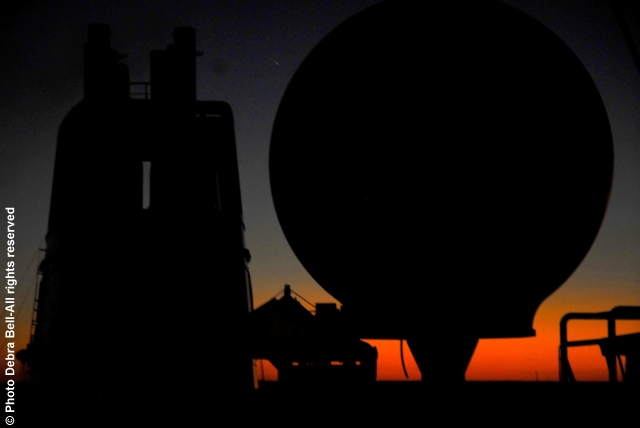¹Boys A, ¹Murugiah M, ¹van Gijn D, ²Raw J, ¹Hughes F
¹Kingʼs College Hospital, London
²University College, London
Photos: Debra Bell and Liz Cantu
INTRODUCTION
Scar evolution and secondary complications Noma, or Cancrum Oris, is a multifactorial destructive and disfiguring condition occurring within a background of malnutrition and immunosuppression. The World Health Organisation reported a total incidence of of 770,000 in 1997. The mortality rate is 95%. Disease progression consists of three overlapping stages; severe malnutrition, a preceding severe illness and colonisation with specific invasive and destructive microbes such as Fusobacterium necrophorum and Prevotella intermedia.
CASE REPORT Scar evolution and secondary complications Noma, or Cancrum Oris, is a multifactorial destructive and disfiguring condition occurring within a background of malnutrition and immunosuppression. The World Health Organisation reported a total incidence of of 770,000 in 1997. The mortality rate is 95%. Disease progression consists of three overlapping stages; severe malnutrition, a preceding severe illness and colonisation with specific invasive and destructive microbes such as Fusobacterium necrophorum and Prevotella intermedia.
The authors present a case of a severely malnourished six year old female with extensive buccal soft tissue necrosis and bony destruction of the right maxilla and zygoma. Initial treatment consisted of parenteral nutrition, intravenous antibiotics and sequential surgical wound debridement under ketamine sedation. Tissue viability, ocular protection and masticatory exercises were commenced and pursued over a ten month period. Optimal nutrition and immune status were achieved prior to reconstructive surgery. The conditions
required for noma to occur dictate that the patient is usually from a remote, and impoverished area, without access to healthcare. Therefore, the majority of surviving cases present to the reconstructive surgeon at a clinically advanced stage. The case here described offers a novel insight into the full progression of the disease - from the acute presentation through to surgical reconstruction allowing consideration of holistic treatment planning, including the prevention of frequently encountered secondary complications of ectropion, corneal abrasion and ankylosis.
Fig 1. Acute infection Day 4

Fig 2. Following initial debridement

Fig 3. 6 months post debridement

Fig 4. 10 months post debridement

SCAR EVOLUTION and SECONDARY COMPLICATIONS
Once the infective process has ʻburnt outʼ, or been arrested with antibiotics, scar evolution begins. Over time (6-12months) impressive scar contracture can occur reducing the defect size considerably. However, this comes at an expense; distorting surrounding tissues, most often at effecting the lower lid. Significant ectropion can occur, leading to corneal abrasions and ultimately blindness. Muscle fibrosis and contracture can result in trismus and ankylosis. It is for this reason that presentation at the acute stage can allow early intervention to reduce secondary complications.
Fig 1. Incision and inversion of scar

Fig 2.Temporalis flap raised
Fig 3. Inversion of flap
Fig 4. Split thickness skin graft (unmeshed)
SURGICAL RECONSTRUCTION
The patient in this report underwent a single stage temporalis flap with split thickness skin graft. The patient was fibre-optically nasally intubated, due to reduced mouth opening. No debridement was needed due to waiting ten months. The marginal scar was incised and inverted for use as oral lining. A hemi-coronal incision was made, a flap was raised via elevation of temporalis fascia and temporalis muscle including a 15 mm margin of deep temporalis fascia on the superior edge of the muscle. The temporalis muscle was inverted and
passed into the oral cavity where it was sutured into position over the inverted normal scar to form a buccal lining.
The inverted noma scar covered about 50% of the oral surface of the cheek whilst the muscle flap covered deep to the inverted scar as well as the space between the edges of the inverted scar tissue. An unmeshed split thickness skin graft from the left thigh was applied to the facial surface of the temporalis muscle flap. Vicryl was used to secure the skin graft to skin surrounding the muscle flap. Jelonet, saline soaked gauze and sponge covering was secured over the graft. Right lateral tarsorraphy was carried out using prolene with silastic tubing bolster. A Wolfe graft and naso-gastric feeding were applied for 7 days.
Fig 1. Two weeks post-operatively

passed into the oral cavity where it was sutured into position over the inverted normal scar to form a buccal lining.
The inverted noma scar covered about 50% of the oral surface of the cheek whilst the muscle flap covered deep to the inverted scar as well as the space between the edges of the inverted scar tissue. An unmeshed split thickness skin graft from the left thigh was applied to the facial surface of the temporalis muscle flap. Vicryl was used to secure the skin graft to skin surrounding the muscle flap. Jelonet, saline soaked gauze and sponge covering was secured over the graft. Right lateral tarsorraphy was carried out using prolene with silastic tubing bolster. A Wolfe graft and naso-gastric feeding were applied for 7 days.
Fig 1. Two weeks post-operatively

Fig 2. Four weeks post-operatively

Fig 3. Five weeks post-operatively

Fig 4. Four months post-operative
months post-operative

Fig 3. Five weeks post-operatively

Fig 4. Four
 months post-operative
months post-operative DISCUSSION
It is rare for a noma patient to present to a medical centre in the acute stage of infection, rarer still is on hand surgical expertise to advise on early management. The case presented therefore offers a unique view into the disease process. Although early advice and input from specialists do not alter the timing of reconstructive surgery, it is beneficial on a number of
levels. Survival can be ensured with resuscitation and staged debridement. Optimisation of the patient for surgery with minimisation of secondary complications are the key benefits to early specialty input. Observing the scar progression and anticipating secondary complications allowed optimal surgical planning and minimised morbidity to the eye and
temporomandibular joint.
(For patient story during her surgical and recovery time on the Africa Mercy, refere to my archive: Aicha-Love in Action, June 1, 2010)
Correspondence email: abigailboys@googlemail.com
levels. Survival can be ensured with resuscitation and staged debridement. Optimisation of the patient for surgery with minimisation of secondary complications are the key benefits to early specialty input. Observing the scar progression and anticipating secondary complications allowed optimal surgical planning and minimised morbidity to the eye and
temporomandibular joint.
(For patient story during her surgical and recovery time on the Africa Mercy, refere to my archive: Aicha-Love in Action, June 1, 2010)
Correspondence email: abigailboys@googlemail.com















































No comments:
Post a Comment
Note: Only a member of this blog may post a comment.